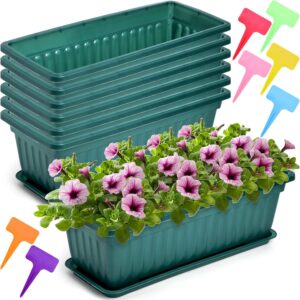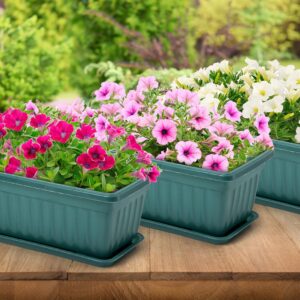

Are you tired of the hassle and expense of traditional gardening methods? Look no further than this brilliant idea for growing onions and garlic in a simple Styrofoam box! In this comprehensive guide, we’ll walk you through the step-by-step process of setting up your own mini-garden, from choosing the right container to harvesting your fresh produce. Whether you’re a seasoned green thumb or a complete novice, this innovative technique is sure to revolutionize the way you think about home-grown vegetables.
The Benefits of Growing Onions and Garlic in a Styrofoam Box
Growing your own onions and garlic can be incredibly rewarding, but traditional gardening methods can be time-consuming and resource-intensive. That’s where the Styrofoam box technique comes in. By utilizing repurposed food containers, you can create a self-contained, low-maintenance growing system that requires minimal effort and space. Here are just a few of the benefits you can expect:
- Cost-Effective: Styrofoam boxes are inexpensive and readily available, making this a budget-friendly option for aspiring gardeners.
- Space-Saving: The compact nature of the Styrofoam box allows you to grow your own produce, even in small spaces like balconies, patios, or windowsills.
- Low Maintenance: With the self-watering design, you won’t have to worry about constantly tending to your plants, freeing up more time for other hobbies and activities.
- Versatile: This technique can be used to grow a variety of vegetables, herbs, and even flowers, making it a versatile solution for your gardening needs.
Choosing the Right Styrofoam Box
The first step in your Styrofoam box gardening journey is to select the right container. While you can use a variety of repurposed Styrofoam containers, such as those used for food packaging, it’s important to choose one that is sturdy and large enough to accommodate your desired plants.
Ideally, you’ll want a box that is at least 6 inches deep and 12 inches wide, as this will provide ample space for the roots of your onions and garlic to grow. Additionally, make sure the container has a lid or cover to help retain moisture and protect your plants from the elements.
Preparing the Styrofoam Box
Once you’ve selected your Styrofoam box, it’s time to get it ready for planting. Here’s what you’ll need to do:
- Drill Drainage Holes: Use a drill to create several small holes in the bottom of the box, ensuring that any excess water can drain out and prevent water logging.
- Add Soil: Fill the box with a high-quality potting mix or a well-draining soil blend. Avoid using heavy, dense soils, as they can become compacted and inhibit plant growth.
- Create Planting Holes: Using a pencil or your finger, create evenly spaced holes in the soil, approximately 4-6 inches apart, to accommodate your onion and garlic sets.
Planting Onions and Garlic
Now that your Styrofoam box is ready, it’s time to plant your onions and garlic. Here’s how to do it:
- Prepare the Onion and Garlic Sets: Onion and garlic sets are the small, immature bulbs that you can purchase from your local garden center or online. Gently separate the sets and remove any loose or damaged outer layers.
- Plant the Sets: Carefully place the onion and garlic sets into the pre-made holes, ensuring that the pointed end is facing up. Gently press the soil around the sets to secure them in place.
- Water the Planting Area: Once all the sets are in place, water the soil thoroughly, being careful not to displace the plants.
Remember to space the onion and garlic sets about 4-6 inches apart to allow for proper growth and development. This will help ensure a bountiful harvest.
Caring for Your Styrofoam Box Garden
Maintaining your Styrofoam box garden is a breeze, thanks to the self-watering design. Here’s what you need to do:
- Water the Box: Fill the Styrofoam box with water, ensuring that the soil is thoroughly saturated. The water will slowly seep into the soil, providing a consistent moisture level for your plants.
- Monitor Soil Moisture: Check the soil regularly and add more water as needed to keep it consistently moist, but not waterlogged.
- Provide Sunlight: Onions and garlic thrive in full sun, so place your Styrofoam box in a location that receives at least 6 hours of direct sunlight per day.
- Fertilize Occasionally: Every few weeks, apply a balanced, water-soluble fertilizer to the soil to provide your plants with the necessary nutrients for healthy growth.
- Remove Weeds: Regularly check the soil for any unwanted weeds and remove them by hand to prevent them from competing with your onions and garlic for resources.
By following these simple care instructions, you’ll be well on your way to a bountiful harvest of fresh, homegrown onions and garlic.
Harvesting and Storing Your Onions and Garlic
Patience is key when it comes to growing onions and garlic in a Styrofoam box. Depending on the variety, it can take anywhere from 3 to 6 months for the plants to reach maturity and be ready for harvest.
Here’s how to know when it’s time to harvest:
- Onions: Harvest your onions when the tops begin to yellow and fall over, typically 3-4 months after planting. Gently dig around the base of the plant and pull the onions out of the soil.
- Garlic: Garlic is ready to harvest when the lower leaves begin to turn brown and the tops start to fall over, usually 5-6 months after planting. Carefully dig around the base of the plant and pull the garlic bulbs out of the soil.
After harvesting, it’s important to properly cure and store your onions and garlic to ensure they last as long as possible. To cure them, lay the plants out in a well-ventilated, shaded area for 2-4 weeks, allowing the outer layers to dry and the stems to wither.
Once cured, you can store the onions and garlic in a cool, dry place, such as a pantry or basement. For optimal storage, consider investing in a cement idea project to create your own custom storage containers.
Troubleshooting Common Issues
While the Styrofoam box gardening method is generally low-maintenance, you may encounter a few challenges along the way. Here are some common issues and how to address them:
- Yellowing or Wilting Leaves: This could be a sign of over watering or under watering. Adjust your watering schedule accordingly and ensure the soil is draining properly.
- Pests: Keep an eye out for common garden pests, such as aphids or onion flies, and address them promptly with organic pest control methods.
- Stunted Growth: If your onions and garlic are not growing as expected, check the soil quality and consider adding a balanced fertilizer to provide the necessary nutrients.
Remember, every garden is unique, and it may take some trial and error to find the perfect balance for your Styrofoam box setup. Don’t be afraid to experiment and adjust your approach as needed.
The Benefits of Growing Onions and Garlic in a Styrofoam Box


